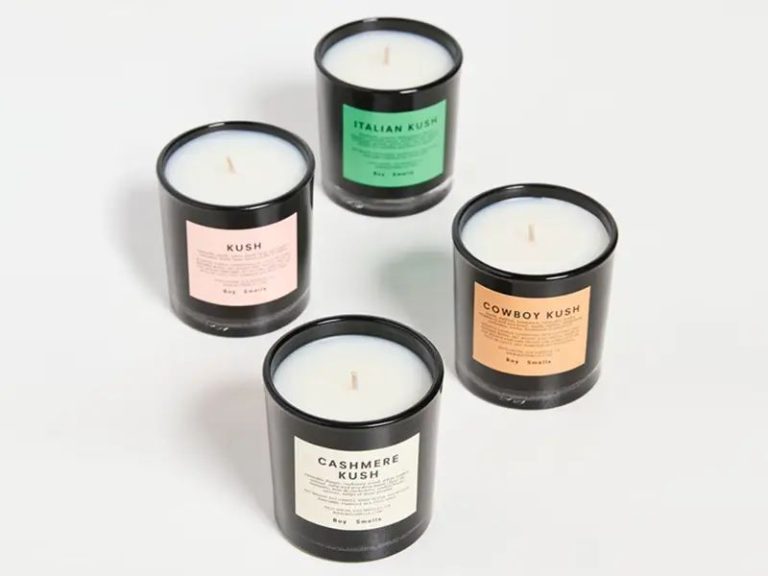How Profitable Is Candle Making?
Candle making is the process of creating candles by hand, often using techniques like pouring, dipping, and molding to shape wax into decorative candles. Determining the profitability of a candle making business requires a close look at factors like startup costs, overhead expenses, pricing strategies, sales channels, and profit margins.
Key elements that impact profitability include initial investments for supplies and equipment, ongoing material and operating costs, pricing models and product quality, marketing and sales opportunities through online and physical channels, and calculating net profits. Assessing these aspects can reveal if candle making can be a lucrative business or more of a hobby.
Startup Costs
Starting a candle making business requires several types of investments according to https://finmodelslab.com/blogs/startup-costs/candle-making-startup-costs. On average, total startup costs range from $350 to $5,000.
The main startup costs include:
- Equipment like wax melters, thermometers, molds, jars, and wicking – $500 to $3,000 depending on scale and quality according to https://financialmodeltemplates.com/blogs/blog/candle-making-startup-costs
- Ingredients like wax, fragrance oils, dyes – $50 to $500 to start
- Packaging materials like jars, lids, labels – $100 to $500 initially
- Marketing assets like logo design, website, photos – $500 to $2,000 according to https://finmodelslab.com/blogs/startup-costs/handcrafted-candle-making-startup-costs
The type and amount of equipment, ingredients, packaging and marketing assets required depends on the scale of production and business model.
Overhead Costs
Overhead costs consist of expenses required to operate the business but that are not directly tied to production. For a small candle making business, the main overhead costs include rent, utilities, insurance, and employee salaries.
Rent is often one of the largest overhead expenses. The space needed will depend on the size of production, but candle makers often rent commercial kitchens or small warehouse spaces. According to FinModelsLab, rent for a small candle making business can range from $500 to $2,000 per month.
Utility costs like electricity and gas will vary based on production volume and equipment used. Melting wax and heating molds requires significant energy, so costs may range from $50 to $200 per month for small operations. Larger production will incur higher utility bills.
Liability insurance is essential to protect against risks like fire and cover any injuries. Basic policies start around $50 per month. Product liability insurance adds further protection against claims and may cost $100 or more monthly.
For small businesses, employee salaries often represent the largest portion of overhead. According to CandleScience, one employee working full-time could cost $2,500 to $3,500 per month including benefits. More employees or higher wages increase this major overhead cost.
Pricing
When determining pricing for homemade candles, the main factors to consider are material costs, labor, target profit margins, and competitor pricing. According to Reddit users on r/candlemaking, the material costs tend to be around $4.44 for a 4oz tin candle and $6.51 for an 8oz jar candle (source). This factors in wax, fragrance, wicks, jars/tins, and labeling.
Labor costs will depend on how long it takes you to make each candle, including preparation, pouring, curing, labeling etc. Most candle makers recommend pricing your products at 2-3x your material costs in order to build in a healthy profit margin (source). So if your material cost is $5, aim for a sales price around $10-15. You’ll also want to research competitor pricing for similar candle styles and sizes to ensure your prices are in line with the market.
According to Forbes, many small batch candle makers target a profit margin between 25-50% (source). This means if your total costs are $5, your sales price should be $6.25-7.50 to hit that profit goal. Take all of these factors into account when determining pricing, and be prepared to refine as needed based on sales and feedback.

Sales Channels
There are several popular sales channels that candle makers utilize to sell their products including wholesale, retail, online, and craft fairs. Wholesale involves selling large quantities of candles to retailers who then resell the products to consumers. This allows candle makers to sell larger volumes at lower margins. Retail includes selling candles through physical stores and boutiques. These locations allow customers to see, touch, and smell products before purchasing. Online sales have grown in popularity given the global reach of ecommerce. Many candle brands now sell through their own websites or on marketplaces like Etsy and Amazon. Craft fairs remain a staple for small candle businesses, creating a personal connection between makers and buyers.
Marketing
Marketing is essential for getting the word out about your candle business and driving sales. Investing in branding, social media, SEO, and partnerships can help attract customers.
Branding involves developing your company’s name, logo, packaging design, and overall image. A consistent, recognizable brand helps customers remember you. Brand assets like custom labels can make your candles stand out. Initial branding and design work may cost $500-$2,000.
Social media is a popular, affordable marketing channel. Promoting your candles through platforms like Instagram and Facebook can raise awareness. Paid ads on social media cost around $5-$25 per day. Developing creative social media content and campaigns takes consistent effort.
Search engine optimization (SEO) helps your website and products show up in search results. Optimizing product titles, descriptions, alt text, and website content for relevant keywords can improve visibility. While organic SEO is free, hiring a consultant costs around $500-$2,000 upfront.
Strategic partnerships with stores, blogs, influencers, and affiliates allow you to share customers and cross-promote. Affiliate programs reward partners for driving sales to your site. Partnerships expand your reach and often benefit both parties.
Profit Margins
Typical net profit percentages for a small candle making business range from 20% to 50%, with an average of around 35% according to industry experts. This means for every $100 in revenue generated, the business nets between $20 to $50 in profit after deducting all costs of goods sold and overhead expenses. Several factors affect profit margins in candle making:
Retail vs wholesale – Selling candles at retail prices directly to consumers yields higher margins around 45% to 50%, compared to wholesale which can be 20% to 30%. However, wholesale has potential for higher volumes.
Pricing – Setting prices to deliver ideal margins without losing competitiveness. Luxury and niche candles can bear higher margins.
Production costs – Efficient processes and bulk buying of candle making supplies reduces per unit costs.
Overheads – Keeping fixed and variable costs like labor, rent, utilities low through smart management.
Distribution channels – Online retail has higher margins as it avoids intermediary costs. Wholesale and retail stores have lower margins.
Differentiating value – Unique scents, branding and packaging help command better pricing power and margins.
By focusing on these areas, small businesses can improve profit percentages over time. Profit margins above 40% indicate a healthy and well-run candle making business.
Growth Potential
There is strong potential for growth in the candle making business by expanding product lines, sales channels, and marketing efforts. Many successful candle makers start out with a core line of candles and expand into additional products like wax melts, room sprays, bath bombs, soaps, and more as they grow. Diversifying product offerings allows candle businesses to reach new customers and increase average order value.
In terms of sales channels, candle makers can start by selling locally at craft fairs, farmer’s markets, and boutiques. As they gain experience and customer base, they can expand into online sales via their own ecommerce website as well as third party sites like Etsy, Amazon Handmade, and more. Building an online presence and digital marketing strategy is key for scaling up sales. Retail partnerships with gift shops, home goods stores, and specialty boutiques also present opportunities for growth.
Strategic marketing and branding will also fuel business expansion. As candle makers refine their brand image and marketing tactics like social media, email marketing, and influencer partnerships they can attract more customers. Content marketing and SEO help improve visibility and establish expertise. Exhibiting at national wholesale trade shows opens doors to new accounts. There are many avenues for candle makers to pursue growth through product, channel, and marketing strategies.
Challenges in the Candle Making Business
Running a successful candle making business comes with its fair share of challenges. Some of the main difficulties include dealing with competition, managing seasonality and inventory.
The candle industry is quite saturated, with both large manufacturers and small home-based businesses competing for customers. It can be difficult for new candle makers to stand out in a crowded market. Effective branding, product differentiation and smart marketing are essential (The Five Biggest Mistakes Candle Makers Should Avoid).
Candle sales are also highly seasonal, peaking in the fall and winter months. Slow summer sales can make it hard to sustain the business year-round. Planning production cycles and managing inventory efficiently is crucial to bridge the gap between peak seasons (5 Reasons People Fail at Candle Making). Having sufficient working capital and lean operations helps weather ups and downs.
Keeping optimal inventory is another ongoing balancing act. Overstocking ties up cash while understocking leads to lost sales. Careful forecasting, ordering and production scheduling is key. Adapting to shifting consumer preferences swiftly also helps minimize obsolete stock.
Conclusion
In summary, candle making can be a profitable business if done right. The keys to success include keeping startup and overhead costs low by initially working from home, pricing products competitively, utilizing both online and offline sales channels, focused marketing efforts, and maintaining healthy profit margins around 50-60%. Growth potential exists by expanding product lines, retail distribution, and custom orders. Challenges that need to be overcome include finding inexpensive raw materials, perfecting recipes, labeling and packaging, and competition. Overall, with passion and persistence, candle making holds opportunity to become a lucrative business venture.



